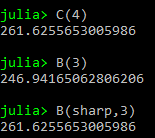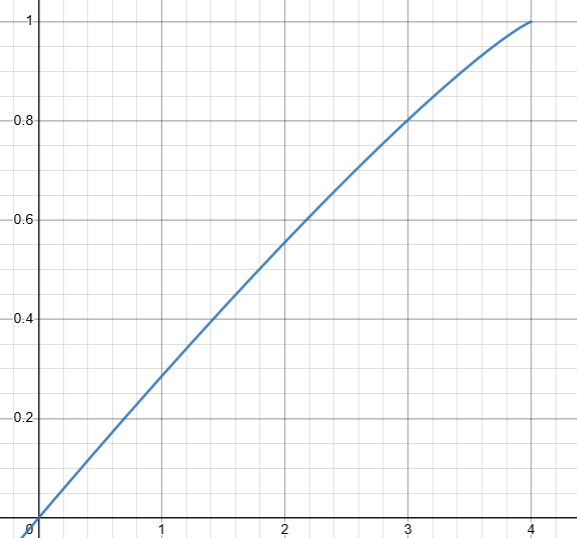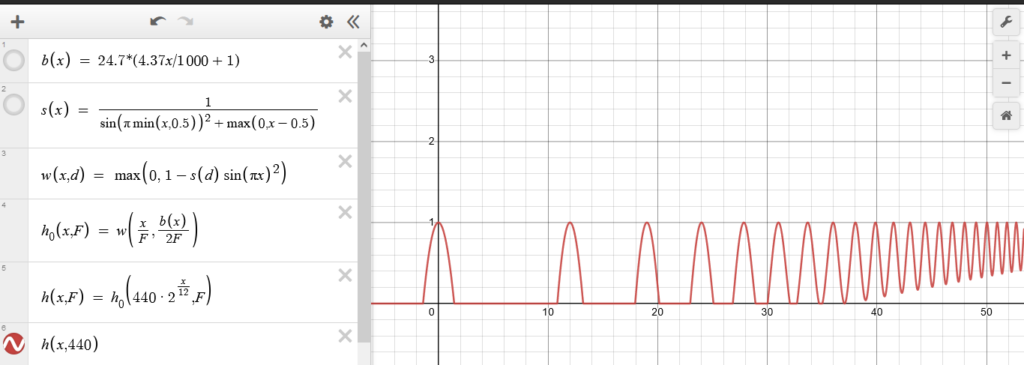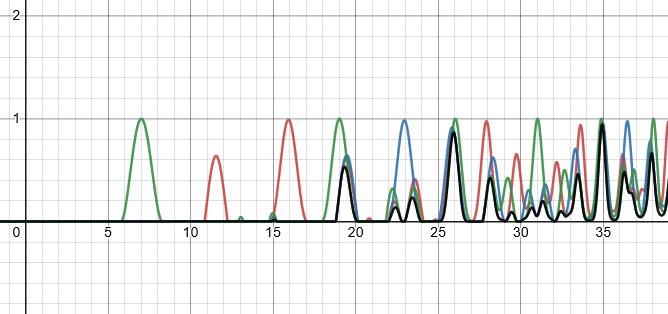I made a new copy of my visualizer code to look at 19-tone equal temperament (shortened 19-TET). The typical way to notate the system is to assign the new notes existing sharp/flat names, splitting the existing sharps/flats into companions and adding a new sharp/flat into the old semi-tone gaps. To see what I mean, have a look at the names for notes:
In 12-TET:
| C/B# | C#/Db | D | D#/Eb | E/Fb | F/E# | F#/Gb | G | G#Ab | A | A#/Bb | B/Cb |
In 19-TET
| C | C# | Db | D | D# | Eb | E | E#/Fb | F | F# | Gb | G | G# | Ab | A | A# | Bb | B | B#/Cb |
This results in the names getting spaced out almost the same as usual, but making better approximations to the important whole-number pitch ratios. For example, E in 19-TET is close to E in 12-TET, but a little flatter, closer to the just ratio.
In using the visualizer, I was only able to see one thing, which wasn’t surprising: A# gets close to one of the overtones of a low C. More generally, the note 15/19ths above a root is it somewhat close to its “harmonic seventh,” an interval that 12-TET misses by a lot. Because that harmonic seventh is a feature of blues, I tried an experiment in boogie woogie. Making abundant use of that special interval in place of the typical dominant seventh, I made some formulaic boogie woogie music in Musescore, using a plugin to automatically adjust the pitches into 19-TET tuning.
I’m pleased with the result, though it is pretty harsh. I think the harshness is partly just because of the synthesized piano sound, partly because this tuning is alien to our 12-TET conditioned ears, and partly because I’m leaning on that seventh, which is a dissonant sound.


























